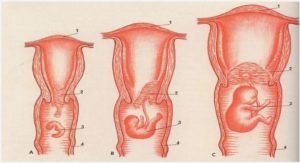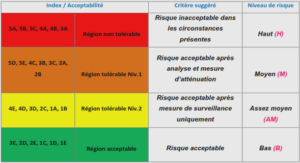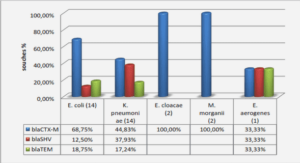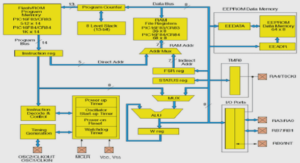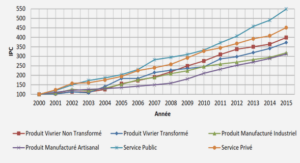Influence of CYP3A4, CYP3A5 and ABCB1 genotypes on clinical outcomes in liver transplantation: Myth or reality?
Importance of the field: Immunosuppressive drugs (calcineurin inhibitors) have high interindividual pharmacokinetic variability and narrow therapeutic ranges. Therapeutic monitoring of these drugs, through the assessment of cyclosporine or tacrolimus blood concentrations, reduces rejection rates and side effects (mainly nephrotoxicity). A pharmacogenomic approach could help avoiding adverse reactions and refining the calcineurin inhibitor (CNI) doses in liver transplantation. Areas covered in this review: Single Nucleotide polymorphisms (SNPs), the most abundant genetic variation, can affect RNA expression, processing and its traduction in proteins. Numerous SNPs were described in the genes encoding CNI metabolizing enzymes, membrane transporters or receptors. This review concerns the CYP3A4 and CYP3A5 (CNI metabolizing enzymes) and ABCB1 (a CNI efflux transporter abundantly expressed in gut, liver and kidneys). This review will explore the impact of their SNPs on clinical outcomes in liver transplantation. What the reader will gain: A better understanding of the impact of CYP3A4, CYP3A5 and ABCB1 polymorphisms on cyclosporine and tacrolimus on the short and long-term clinical outcome (rejection, survival and nephrotoxicity) in liver transplantation.
Impact on CsA PK
CsA is metabolized primarily by CYP3A4 and CYP3A5 in the small intestine and the liver.Three CsA metabolites, AM1 (hydroxylation at amino acid 1), AM9 (hydroxylation at amino acid 9) and AM4n (N-demethylation at amino acid 4) are produced by CYP3A4; only AM9 is produced by CYP3A5. CYP3A4 is thus the major contributor to the oxydative metabolism of CsA (49,50). The total metabolic clearance of CsA is not substantially affected by CYP3A5 expression. Several studies found no impact of the CYP3A4*1B allele on CsA PK (51,52). In contrast, in 14 healthy volunteers the mean oral clearance of CsA was: CL/F (L/hr) = 49.4 +/- 13.9 (A/A,wild-type, n=4), 83.5 +/- 16.0 (G/G, homozygous variant, n=4), and 52.5 +/- 5.6 (A/G,heterozygous, n=6), P = 0.0024 (53). Although patient numbers are really low, this suggests increased enzymatic activity in vivo in patients with at least one mutant CYP3A4*1B allele. In 100 renal transplant patients studied at an average of 7.3 years post-transplantation, Zochowska et al. found lower CsA dose-adjusted trough blood concentrations in CYP3A4*1/*1B than in CYP3A4*1/*1 carriers (54), but the allelic frequency of the CYP3A4*1B allele was only 2.5%. These significant results are presumably the results of the functional effect of CYP3A5*1, which is in linkage disequilibrium with CYP3A4*1B and the proper role of CYP3A4*1B in CsA metabolism is thus not convincing. The study of Crettol et al. found that the CYP3A7 *1C carriers required a 1.4 fold to 1.6 fold higher CsA dose during the first year post transplantation (P<0.05) in 64 renal and 9 lung transplant (27). Sharaki et al. confirmed that CYP3A4 rs4646437C>T influenced significantly cyclosporine kinetics, the T carriers requiring higher cyclosporine dose in KTR (28). None study was reported in LT. Chinese homozygous wild-type CYP3A4*18B carriers (GG genotype) had a higher risk of CsA-related liver injury in renal transplantation over the first three months post-transplantation (30-32). As mentioned before, the CYP3A4*18B polymorphism may be helpful for Asian renal transplants treated by CsA or Tac. In a cohort of renal transplant patients, the pre-dose CsA C(0) at 3 months post-transplantation was higher in CYP3A4*1/*1 (GG alleles) and CYP3A4*1/*18B carriers than in CYP3A4*18B/*18B carriers (p<0.05) (30). Only these studies investigated the CYP3A4*18B allele and both concerned Asian patients. The CYP3A4*22 allele seems the most promising to study for cohort of solid organ transplantation (55). Elens et al. found in 50 renal transplant recipients that the CYP3A4*22 allele was associated with 1.6 fold higher CsA dose-adjusted concentrations (95%CI: 1.1-2.6; p=0.019). Homozygous wild-type patients need higher CsA doses to achieve the target levels than carriers of the variant CYP3A4*22 allele (56,57). A recent study in renal transplant recipients, showed that CYP3A4*22 carriers had a significantly, 15% lower CsA clearances than non carriers (58). In another study with a longitudinal follow-up over twelve months post KTR (n=172), the CYP3A4*22 allele was not associated with CsA PK, but it was associated with an increased rate of delayed graft function compared to CYP3A4*1/*1 carriers (59-61). CYP3A5 reportedly accounts for up to 50% of total CYP3A protein in the small intestine and the liver when at least one copy of the CYP3A5*1 allele is present (50). Anglicheau et al. showed that the CYP3A5*3 polymorphism was not associated with the CsA PK in 106 renal recipients (48). They concluded that the CYP3A5 polymorphism cannot explain the variability of CsA PK in kidney graft (48). Other studies failed to prove that CYP3A5 expression had an impact on CsA dosing in KTR or on CsA dose-normalized concentrations in Asian renal transplants (57,58,62,63). Recently, Zheng et al demonstrated that, although the mean CsA oral clearance was similar between CYP3A5 expressers and non-expressers, its urinary clearance was 20.4% lower in CYP3A5 expressers, which suggests a CYP3A5-dependent intra-renal CsA metabolism (64). In contrast with these studies, in 103 Asian renal transplant patients, CsA dose-adjusted trough levels were 25.5% and 30.7% higher in patients with the CYP3A5*3/*3 genotype than in those with the wild-type genotype, at day 8-15 (p=0.011) and day 16-30 post-transplantation (p=0.015), without influence on CsA 2-h post-dose (C2) levels.
Impact on clinical outcome in patients on cyclosporine
Nephrotoxicity Most studies on CNI nephrotoxicity were conducted in kidney transplant recipients. Individual variability of the production of CsA metabolites could contribute to the individual risk of renal toxicity in solid organ transplantation. Studies on the relationship between CYP3A5 genotype and CsA nephrotoxicity are however contradictory (70-73). The CYP3A4*22 allele was found to be associated with a higher risk of delayed graft function in KTR (*22 carriers versus non-carriers: HR= 6.34; 95% CI 1.38-29.3, p=0.015). Patients with the CYP3A4*22 allele had a 1-year overall creatinine clearance 20% lower than patients carrying the CYP3A4 *1/*1 genotype (95% CI: -33.1 to -7.2%; p=0.002) (74,75). Bouamar et al. found no significant influence of the recipients CYP3A4*1B, CYP3A5*3 and ABCB1 1236C>T, 2677G>T/A and 3435C>T SNPs on renal function with a follow-up of 12 months (52). Garcia et al, in 68 kidney transplant patients followed over one year showed that the incidence of nephrotoxicity was higher in carriers of ABCB1 3435 TT genotype and in those with four to six variants in the three ABCB1 loci (HR: 4.2, 95% CI: 1.3-13.9, p=0.02 and HR: 3.6, 95%CI: 1.1-11.8, p=0.05) but other genotypes (CYP3A4*1B and CYP3A5) had no impact. Finally, a long-term retrospective cohort study of 259 renal transplant patients treated with CsA, showed that the ABCB1 1236T, 2677T an 3435T variant alleles and their corresponding variant haplotype in kidney donors were correlated to a higher risk of graft loss beyond the 4th year post-transplantation. The donor ABCB1 TTT haplotype was also predictive of renal function deterioration (73). In transplantation, the genotype carried by the graft is from the donor and not from the recipient. In KTR, the kidney can thus have a different CYP3A5 expression than intestinal and hepatic cells. In LT, the recipient CYP3A5 or ABCB1 genotypes are expressed in the intestine and kidneys and influence the amount of CsA in the systemic circulation and kidney tubular cells, as well as the amount metabolites formed in these cells (64). Renal CYP3A5 expression may thus lead to local accumulation of nephrotoxic metabolites. The role of ABCB1 polymorphisms is important. P-gp expressed in tubular epithelial cells transports CsA in urine and reduces intra-cellular concentrations in the tubular epithelium. High P-gp activity may independently influence the intra-renal exposure to CsA metabolites and be associated with risks of CsA nephrotoxicity.
Impact on serious adverse events and survival In 2015, Traynor et al. showed in a cohort of 255 white kidney transplant patients treated with CsA that the CYP3A4*22 allele was protective against the development of cancer (HT=0.20; 95%CI: 0.07-0.57; p=0.003). 84% of cancer cases were non-melanoma skin cancer with a lower incidence if patients were not CYP3A4*22 carriers (16% vs 36% of cumulative incidence at ten years p=0.003). None of the variants studied in CYP3A4 (*22= rs 35599367), CYP3A5 (*3/*3), PPARα (rs4253728 and rs 4823613) or POR (*28= rs 1057868) were correlated with graft survival or with the time to first cancer (77) .
|
Table des matières
Liste des abréviations
Liste des figures
Liste des tableaux
Résum
Abstract
I. Introduction
II. Article 1 : Revue de la Littérature
Influence of4, CYP3A5 and ABCB1 genotypes on clinical outcomes in liver transplantation: Myth or reality?
III. Article 2
Influence of donor and recipient CYP3A4, CYP3A5 and ABCB1 genotypes on clinical outcomes and nephrotoxicity in a cohort of liver transplant recipients on anticalcineurin therapy
IV. Perspectives et conclusion
V. Bibliographie
![]() Télécharger le rapport complet
Télécharger le rapport complet

